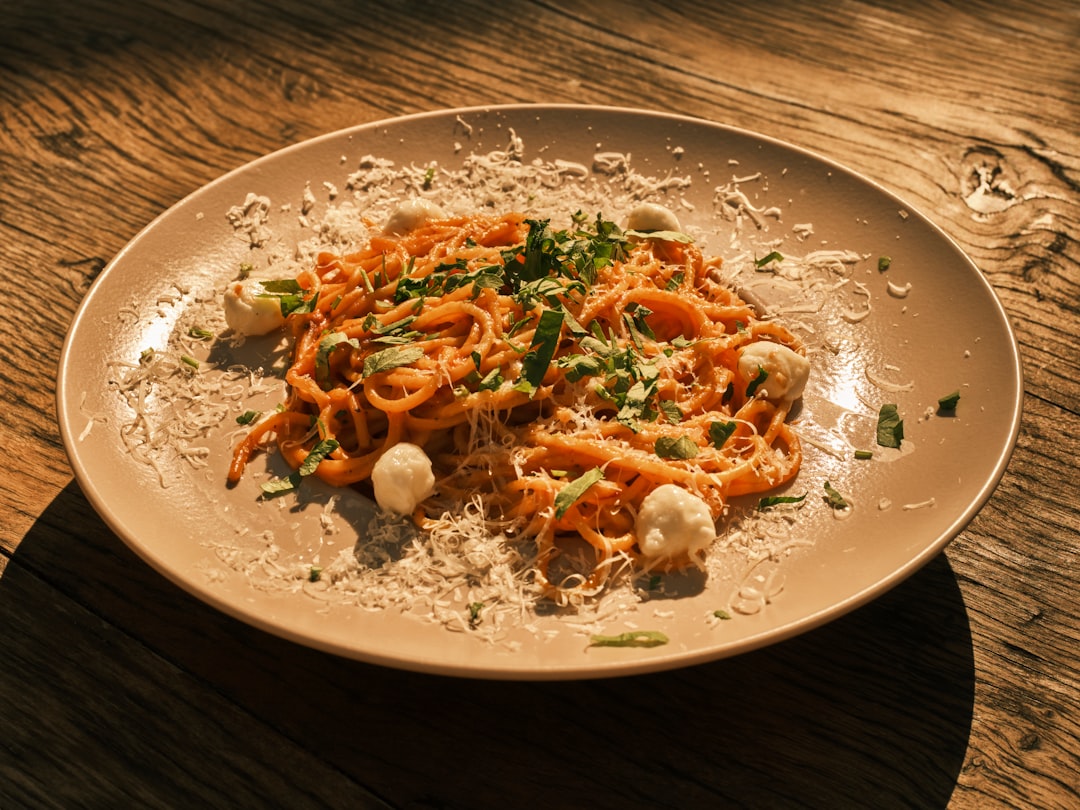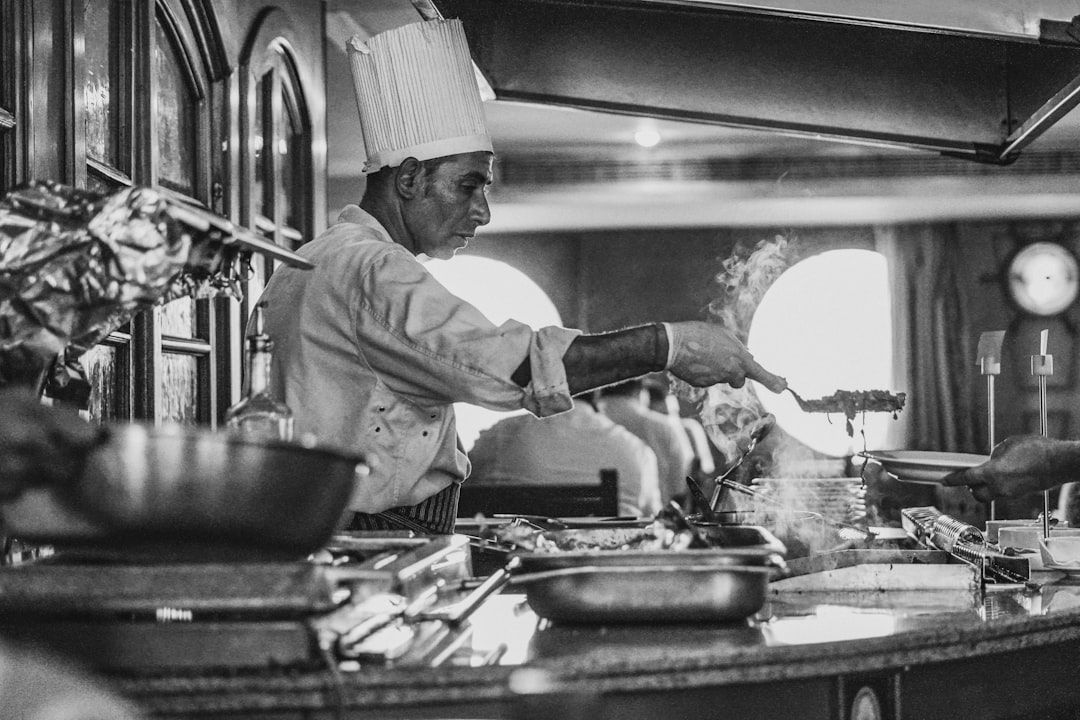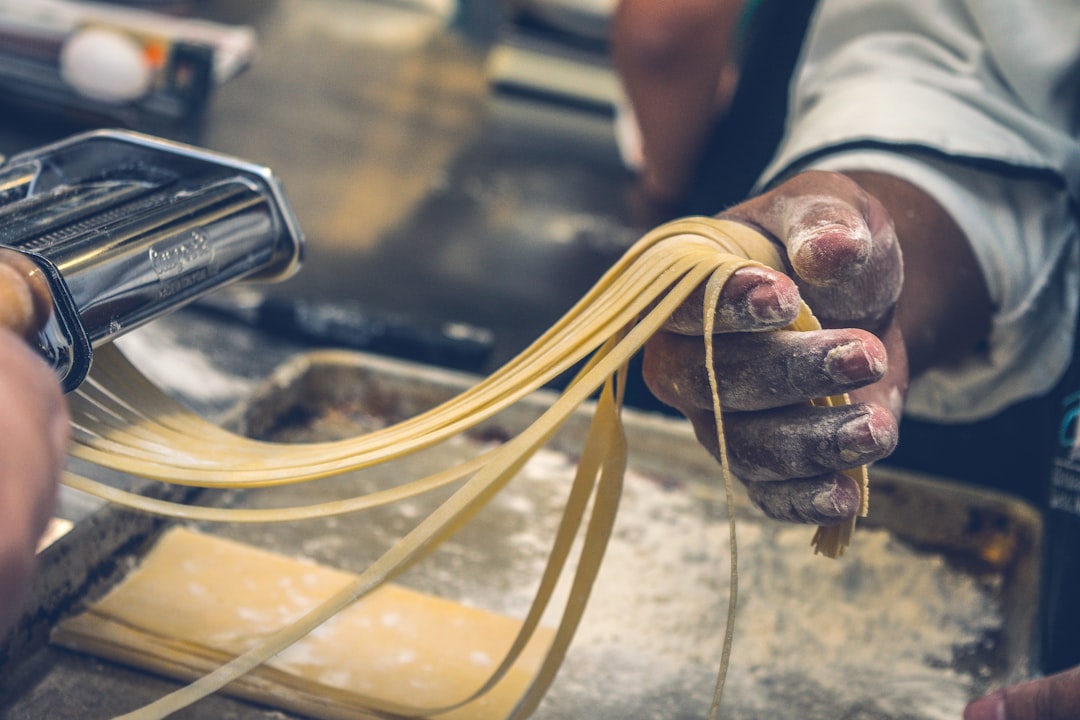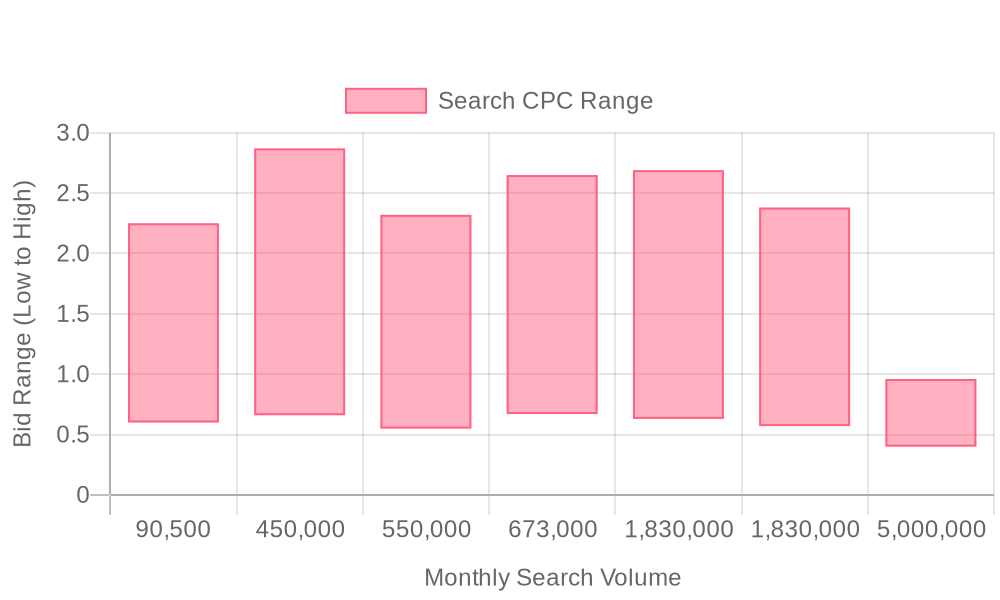
Supercharge your lead generation with a FREE Google Ads audit - no strings attached! See how you can generate more and higher quality leads
Get My Free Google Ads AuditFree consultation

No commitment
Supercharge your lead generation with a FREE Google Ads audit - no strings attached! See how you can generate more and higher quality leads
Get My Free Google Ads AuditFree consultation

No commitment
In the bustling world of Italian cuisine, attracting diners has become a competitive art. Restaurateurs face challenges like struggling to attract local diners despite having a great menu and ambiance, or standing out in a crowded market with many competitors. Digital innovations, such as Google Ads, offer a strategic advantage by helping to overcome these challenges. Understanding the impact of these challenges on reservation rates and visibility is crucial. By integrating Google Ads with a robust digital marketing strategy, Italian restaurants can target precise customer segments, engage local diners searching for authentic dining experiences, and ultimately drive foot traffic and increase reservations.

Italian restaurant marketing thrives with a precise, data-driven approach to Google Ads. Leveraging behavioral insights and real-time analytics allows you to direct ad spend toward guests most likely to convert, eliminating wasted budget and maximizing visibility with measurable outcomes.
Campaigns become significantly more effective when advanced targeting segments audiences by neighborhood, dining preferences, and demographic details, ensuring your ads reach only those diners who are truly interested in Italian cuisine. One analysis in AdTargeting for Italian cuisine explores how keyword segmentation can refine reach for Italian restaurants.
When dynamic audience updates are integrated, marketing teams can adjust targeting as diners move from initial browsing to reservation, maintaining relevance and fostering engagement throughout the decision journey. Platforms like Sona Audiences are designed to automatically segment and refresh your ad audiences, so your message stays relevant as diner intent evolves.
Visually rich and appetizing creatives tailored for Italian food themes are crucial. Eye-catching imagery of signature dishes paired with compelling offers draws in local diners, while promotional extensions such as limited-time specials or family-style discounts elevate campaign performance and set your restaurant apart from competitors.
Conversion optimization is an ongoing process. By continually testing ad variations and refining messaging based on real-time performance data, Italian restaurants can unlock more bookings and orders per dollar spent. For specific tactics to boost Google Ads ROAS, visit our guide on Ads optimization tips.
Integrating advanced attribution, including both online actions and offline reservations or walk-ins, provides an accurate picture of ROI for every campaign element.
A robust restaurant advertising strategy is not limited to Google Ads alone. Cross-channel marketing integration, such as syncing CRM audiences and enriched leads between Google Ads, social media, and email platforms, ensures your restaurant stays top-of-mind for both new prospects and loyal regulars. 7shifts Google Ads benchmarks shares industry benchmarks for this approach. This unified approach to digital marketing for restaurants drives greater customer acquisition, elevates brand presence, and supports sustainable growth in a competitive dining market.

Italian restaurants face unique challenges in attracting local diners amid intense competition and shifting consumer habits. Google Ads provides a direct channel to capture search-driven interest from potential guests who are actively seeking Italian cuisine near them, making it a practical tool for restaurant customer acquisition and online marketing. Google Ads for restaurants provides a deeper look at this trend.

Italian restaurant operators can achieve measurable growth by aligning Google Ads campaigns with the unique dining behaviors of their target audience. Strategic campaign selection provides direct pathways to improve local visibility, boost reservations, and foster repeat visits.

Italian restaurants seeking to drive sustainable growth can unlock new revenue streams by analyzing customer intent and targeting emerging market segments. Data-driven strategies allow for precise campaign refinement, making it easier to reach diners searching for authentic cuisine and unique dining experiences. Google Ads for restaurants provides a deeper look at how these campaigns can be optimized for the food service industry.
Ready to discover more growth opportunities for your restaurant? Get started today.

Effective audience segmentation lets Italian restaurants deliver tailored messaging that matches guest expectations, driving stronger engagement and improving ROI. By organizing campaigns around core dining segments and real-time behavioral insights, marketing teams can capture different customer needs and maximize conversion potential.

| Industry | Keyword | Monthly Search Volume | Competition Level | Low Bid | High Bid |
| Italian Restaurants | mario's pizza | 90500 | LOW | 0.6 | 2.25 |
| Italian Restaurants | italian near me | 450000 | LOW | 0.66 | 2.87 |
| Italian Restaurants | italian food near me | 550000 | LOW | 0.55 | 2.32 |
| Italian Restaurants | pasta near me | 673000 | LOW | 0.67 | 2.65 |
| Italian Restaurants | italian restaurants | 1830000 | LOW | 0.63 | 2.69 |
| Italian Restaurants | italian restaurants near me | 1830000 | LOW | 0.57 | 2.38 |
| Italian Restaurants | olive garden | 5000000 | LOW | 0.4 | 0.96 |
Italian restaurants can boost visibility and attract high-intent diners by targeting keywords that match real-world dining behaviors and preferences. Focusing on both local and long-tail terms ensures ad spend is directed toward users seeking immediate, relevant dining options, not just general browsers.
The right keyword strategy is never static. As diners move from browsing to booking, dynamic keyword lists must evolve. When your marketing stack is connected to a unified data platform, audience and keyword segments can update in real time based on observed web activity, CRM engagement, or even offline reservation data. For more insights on maximizing paid search returns in hospitality, check out our guide on Google Ads ROAS. This ensures your Italian restaurant’s Google Ads always target the most valuable local diners, capturing demand at the exact moment it peaks. For restaurants, this level of precision means more reservations, higher average order value, and less wasted spend on low-intent traffic.
The restaurant market is saturated with generic advertising and low-quality leads. To stand out, Italian restaurant marketers must harness digital channels to drive measurable, high-value reservations and online orders. Using a data-driven campaign structure increases visibility and ensures every dollar spent targets the right diner at the right moment.
This framework is built for professionals seeking to unify online and offline insights, optimize budget allocation, and achieve true attribution in their Google Ads for Italian restaurants efforts. For a deeper look at industry-specific tactics, Google Ads for Restaurants provides actionable recommendations for restaurant marketers. Each step integrates actionable tactics with advanced audience management and conversion tracking, supporting seamless demand generation across all revenue channels.
A successful Google Ads campaign for Italian restaurants starts with a precise, research-backed keyword list. Core dining terms such as "romantic dinners," "family Italian dining," or "best pasta in [city]" drive high purchase intent. Adding local modifiers like "downtown," "uptown," and "near me" narrows the audience to nearby searchers, capitalizing on immediate dining needs and increasing foot traffic. During peak dinner rush periods, focusing on high-intent phrases (e.g., "open now," "book a table tonight") ensures your ads capture diners ready to act.
Employing negative keywords filters out irrelevant clicks, preventing spend on non-commercial queries like recipes or general cooking tips. Aligning your keyword and ad strategies with your social media content calendar further amplifies reach and consistency. Platforms like Intent Signals help marketers enrich keyword targeting using real-time data, continuously updating audience lists as diners move through the funnel—eliminating wasted impressions and ensuring each ad is served to the most relevant, in-market prospects.
Effective ad copy for Italian restaurant marketing highlights what sets your establishment apart. Showcase unique offers such as "two-for-one pasta night" or seasonal tasting menus to entice immediate engagement. Including accolades ("Award-winning chef") and snippets from positive reviews builds credibility with new diners, while integrating calls to action like "See our reviews" reinforces trust. Limited-time promotions—for example, "Reserve now for Valentine’s Day specials"—create urgency and drive quick conversions.
As discussed in our Retargeting Guide, dynamically adjusting ad messaging based on real-time audience behavior and CRM insights ensures high-intent visitors see the most relevant offers, while past guests can receive targeted upsell or loyalty incentives. Each ad impression becomes an opportunity to personalize, increasing click-through rates and lowering acquisition costs across both search and display campaigns.
Conversion-optimized landing pages are essential to restaurant advertising campaigns. Every element, from headlines to imagery, should tightly align with the ad and targeted keywords. For more insights on restaurant landing page best practices, Landing Page Tips provides a helpful overview. Including testimonials, dish highlights, and up-to-date contact information builds engagement and guides visitors toward a reservation or online order. Mobile optimization is critical, as the majority of local restaurant searches are completed on smartphones—clear calls to action like "Book a Table" or "Order Now" must be prominent and actionable on any device.
Modern platforms enable marketers to automatically sync enriched lead and customer data into landing page experiences, tailoring content to the visitor’s prior interactions and preferences. This not only shortens the conversion path but also supports seamless attribution between online engagement and offline outcomes, such as phone reservations or in-person visits.
Continuous improvement is foundational in digital marketing for restaurants. Monitoring conversion actions—calls, online reservations, menu downloads—provides immediate insight into campaign performance. Smart bidding strategies, such as Target CPA, ensure budgets are allocated to the highest-performing segments, streamlining spend and optimizing ROI. Regularly testing variations in ad headlines, copy, and landing page layouts surfaces what resonates best with your audience, driving incremental gains.
If you’re looking to maximize your paid media efficiency, solutions such as Increase ROAS help optimize spend and uncover more high-value diners. Integrating CRM data allows for real-time optimization: audiences update as leads move through the sales funnel, and lookalike segments are created from actual high-value diners. This approach ensures every channel, from Google Ads to social, is continuously refined for maximum impact and true customer acquisition growth.
Running targeted Google Ads for your Italian restaurant isn’t just about visibility—it’s about turning clicks into loyal customers. By leveraging the right strategies, you can cut through the noise and connect with diners actively searching for authentic Italian cuisine.
From optimizing your ad copy with mouthwatering keywords to using location-based targeting and compelling visuals, we’ve covered the essentials to help you stand out. These tactics ensure your ads resonate with food lovers while maximizing your budget for measurable results.
Imagine your restaurant packed with guests who discovered you through a perfectly placed ad—each click bringing you closer to higher bookings and a thriving business. The tools and insights are within reach; now it’s time to put them into action.
Ready to see the difference data-driven advertising can make? Start a free trial to experience Sona's platform and its capabilities.
Effective strategies include leveraging behavioral insights, advanced audience segmentation by neighborhood, dining preferences, and demographics, as well as using visually rich creatives and dynamic audience updates to maintain relevance and foster engagement.
Create effective ads by using precise, data-driven approaches, highlighting unique offers, showcasing visually appealing images of dishes, and continuously testing ad variations based on real-time performance data.
The budget should be directed towards high-intent diners using advanced targeting to eliminate wasted spend and maximize visibility with measurable outcomes.
Target keywords like 'Italian restaurant delivery services,' 'family-friendly Italian restaurants,' and 'authentic Italian cuisine near me,' while excluding irrelevant terms such as 'fast food' or 'Italian food recipes' to optimize budget efficiency.
Success can be measured by integrating advanced attribution that includes both online actions and offline reservations, continuously optimizing based on conversion data, and using analytics to assess ROI.
Join results-focused teams combining Sona Platform automation with advanced Google Ads strategies to scale lead generation

Connect your existing CRM

Free Account Enrichment

No setup fees
No commitment required

Free consultation

Get a custom Google Ads roadmap for your business
Join results-focused teams using Sona Platform automation to activate unified sales and marketing data, maximize ROI on marketing investments, and drive measurable growth

Connect your existing CRM

Free Account Enrichment

No setup fees
No commitment required

Free consultation

Get a custom Google Ads roadmap for your business
Over 500+ auto detailing businesses trust our platform to grow their revenue
Join results-focused teams using Sona Platform automation to activate unified sales and marketing data, maximize ROI on marketing investments, and drive measurable growth

Connect your existing CRM

Free Account Enrichment

No setup fees
No commitment required

Free consultation

Get a custom Google Ads roadmap for your business
Over 500+ auto detailing businesses trust our platform to grow their revenue
Join results-focused teams using Sona Platform automation to activate unified sales and marketing data, maximize ROI on marketing investments, and drive measurable growth

Connect your existing CRM

Free Account Enrichment

No setup fees
No commitment required

Free consultation

Get a custom Google Ads roadmap for your business
Over 500+ auto detailing businesses trust our platform to grow their revenue
Join results-focused teams using Sona Platform automation to activate unified sales and marketing data, maximize ROI on marketing investments, and drive measurable growth

Connect your existing CRM

Free Account Enrichment

No setup fees
No commitment required

Free consultation

Get a custom Google Ads roadmap for your business
Over 500+ auto detailing businesses trust our platform to grow their revenue
Our team of experts can implement your Google Ads campaigns, then show you how Sona helps you manage exceptional campaign performance and sales.
Schedule your FREE 15-minute strategy sessionOur team of experts can help improve your demand generation strategy, and can show you how advanced attribution and data activation can help you realize more opportunities and improve sales performance.
Schedule your FREE 30-minute strategy sessionOur team of experts can help improve your demand generation strategy, and can show you how advanced attribution and data activation can help you realize more opportunities and improve sales performance.
Schedule your FREE 30-minute strategy sessionOur team of experts can help improve your demand generation strategy, and can show you how advanced attribution and data activation can help you realize more opportunities and improve sales performance.
Schedule your FREE 30-minute strategy sessionOur team of experts can help improve your demand generation strategy, and can show you how advanced attribution and data activation can help you realize more opportunities and improve sales performance.
Schedule your FREE 30-minute strategy session





Launch campaigns that generate qualified leads in 30 days or less.
